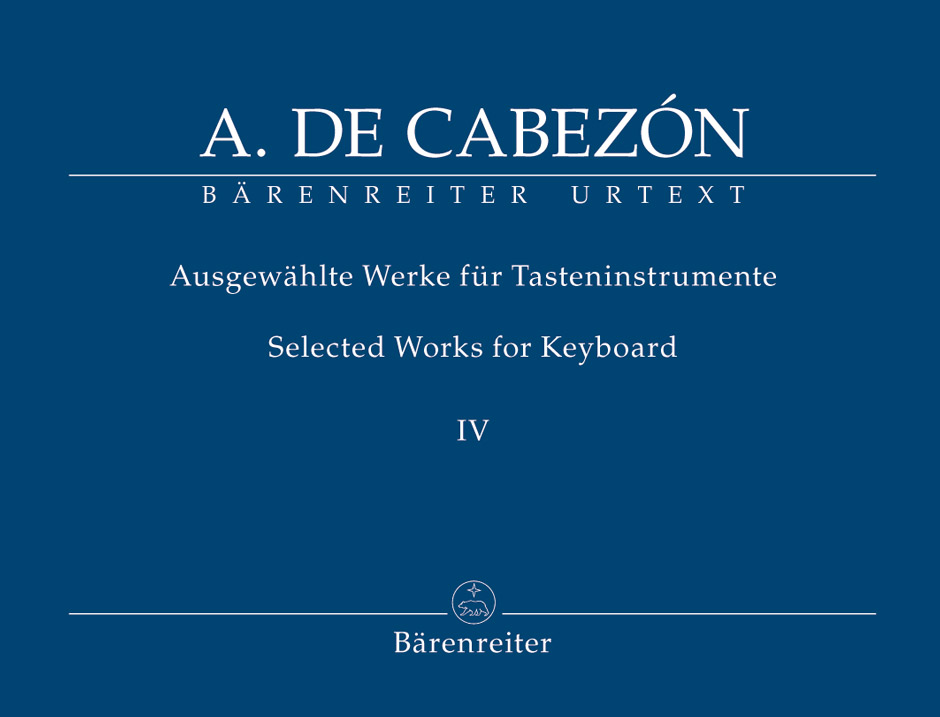Selected Keyboard Works - Vol.4
Beschrijving
The court organist Antonio de Cabezón, who was appointed to Queen Isabellas court chapel in Toledo at the young age of 16, was rightly regarded by his contemporaries as the leading Spanish organist and keyboard player of the 16 th century. His hymns and versets are based on short, decorated harmonisations of the psalm tones. In the tientos, the transformation from vocal motet style to a style of writing suitable for keyboard instruments is perfectly executed.
This Urtext edition contains a selection of Cabezons best known works and will consist of four volumes. It has been prepared by two editors working at Portuguese and Spanish universities who are both leading scholars of the works of Cabezón and reflects the latest research findings.
- First scholarly-critical edition of selected works by the leading Spanish organist
- Reflects the latest research findings
- Each volume with a foreword (Ger/Eng) with tips on editorial technique, critical commentary (Ger/Eng) and index of sources
Content:
- Vorwort:
- Anlass und Konzeption
- Leben
- Werke
- Tabulator
- Cabezóns Tradition
- Hinweise zur Aufführung:
- Metrik
- "Tañer con buen ayre"
- Fingersatz
- Verzierungen und Glosas
- "Semitonía subintelecta"
- Instrument und Registrierung
- Schlusswort
- Abbildungen:
- L. V. de henestrosa. "Libro de cifra nueva para tecla, harpa y vihuela" (1557) Titelblatt
- H. de Cabezón. Obras de Música para tecla, arpa y vihuela, de Antonio de Cabezón" (1578) Titelblatt
- 52. Canción glosada "Je file quand Dieu" (Philip Van Wilder)
- 53. Canción glosada "Au joly boys" (Johannes Lupi)
- 54. Canción glosada "Ayme qui vouldra" (Nicolas Gombert)
- 55. Canción glosada "Triste départ" (Nicolas Gombert)
- 56. Canción glosada "Pis ne me peult venir" (Thomas Crecquillon)
- 57. Canción glosada "Susane un jour" (Orlandus Lassus)
- 58. Canción glosada " Qui la dira" (Adrian Willaert)
- 59. Canción glosada "Ardenti miei sospiri" (Philippe Verdelot)
- 60. Diferencias sobre "Las Vacas"
- 61. Diferencias sobre "La Pavana Italiana"
- 62. Diferencias sobre "La Gallarda Milanesa"
- 63. Diferencias sobre "El Canto Ilano del Caballero"
- 64. Diferencias sobre "La Pavana Italiana"
- 65. Diferencias sobre "La dama le demanda"
- 66. Diferencias sobre "Quién te me enojó Isabel"
- 67. Glosa sobre "Dont vient cela" (Claudin de Sermisy)
- Krititscher Bericht:
- I. Abkürzungen
- II. Zur Editionstechnik
- III. Quellen
- IV. Einzelnachweise
- Bibliographie
